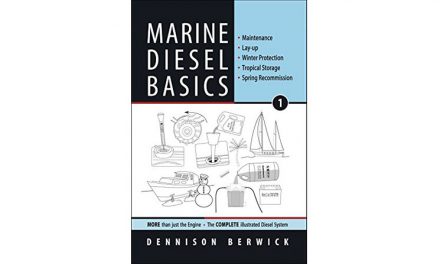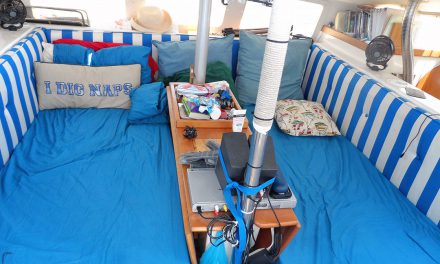
The perceived value of a thing changes as the technology to make it smoother and shinier changes. The author’s comparison of a hand-thrown coffee mug with a new plastic one is an example of strength and integrity versus newness and endlessly repeatable perfection.
Homemade boats often appear to be well, homemade, so one must appreciate the level of heart and quality achieved in the handmade boat. Having said that, I take exception with the author’s notion that boat designing and building is not an art. Separating oneself from “artist’s status” does not exonerate one from the criticism that must follow the creation of something that is not artful or, worse yet in the case of a boat, ugly or unsafe. Ferenc Maté stated that he would rather see a poorly constructed ugly boat than a well-built one, for the poorly built boat would surely fall apart and disappear, sparing us from having to look at it for any longer than necessary. To all the design characteristics that make a thing artful, we must, in the case of a boat, add “purpose.” The boats in this book are mostly purposeful and artful, as we can detect in the lovely Melonseed and Puxe.
Anyone considering any level of boatbuilding will want to have this book in his or her library. The author’s experience in building and sailing his boats is an invaluable resource for all of us. Every discussion of a boat design includes handling characteristics, from a designer’s and a practical perspective. The reader will learn much about what makes a boat strong and perform well.
There are discussions of technique included here that are just not found in most “popular” home building publications, and they are presented in a matter-of-fact style that most of us will find extremely resourceful and humorous.
Of particular interest are his discussions about different kinds of plywood, as well as other building materials. Everything imaginable in terms of building materials, including glues, epoxies, and fasteners is covered in an understandable fashion, serving to inform and to whet the appetite for further study and practice.
In addition, the author reminds us that we are building boats, not furniture. If you’re interested in boatbuilding, buy this book. Thomas Firth Jones is a charming writer, and you’ll likely laugh out loud at several of his observations. His point of view is about people and about the fun, sense of accomplishment, and skill that comes from building small boats. Some readers will index many of the technical descriptions and techniques outlined here, as they are interspersed throughout the book. However you decide to digest this resource, you will surely find it to be a most welcome help in your shop.
New Plywood Boats by Thomas Firth Jones (Sheridan House, 2001; 200 pages)




